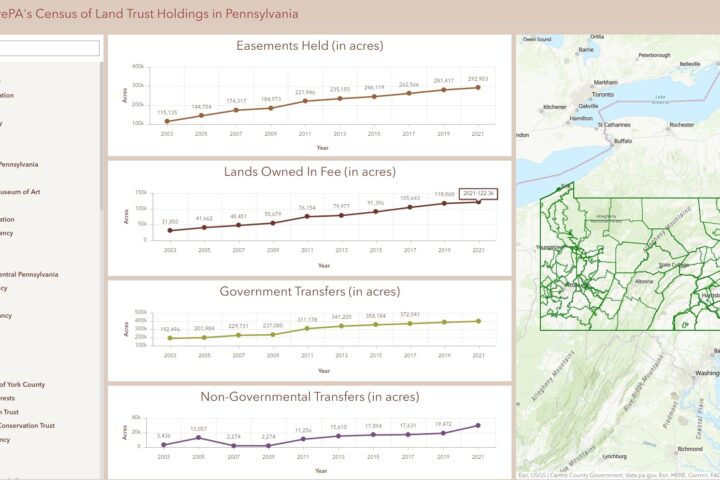Select Observations on S&P
My previous communication on S&P addressed big picture matters. I now provide observations on a few of the draft revision’s proposed practices. (I say much more on the Ethelo online forum.) These comments aren’t intended to cover the most important practices but rather to give you a feel for the revision. I encourage you to review the draft revision in its entirety and comment as appropriate so that your organization’s needs and concerns might be reflected in the final product–a product that many funders (as well as LTA, the Accreditation Commission, and Terrafirma) will expect your land trust to adopt.
Standard 1: A1
“Adopt a written code of ethics and adhere to it in implementing the land trust’s mission, in its governance and it its operations”
My first reaction was that this it a bit much on top of the adoption of S&P, which in part addresses ethics. However, some land trust leaders see this as a valuable addition to their policies.
Note that this is one of nine new land trust policies or plans called for in the revision. (Thank you, Brian Gallagher, for the count.)
Standard 1: C.2.
“Evaluate programs and activities at least annually to ensure they are advancing the strategic goals”
I’ve no objection to the spirit of this practice (which the Accreditation Commission views as a future indicator practice). However, the “at least annually” part bothers me: Is this necessary or desirable for long-standing, smoothly operating programs? Will it force organizations to go through the motions of creating paper trails with no real substance behind them?
Is there an alternative wording that captures the spirit and creates something measurable without creating undue bureaucracy?
Standard 1: D.2.
“Build relationships with elected officials and support conservation policies that are appropriate to the land trust’s mission”
Land conservation and land trust work is accomplished within a broader framework of laws covering a multitude of subjects: government grant programs, property tax exemption, enforceability of conservation easements, liability of landowners for personal injury, private transfer fee constraints, income tax deductions, land use regulation, parks and the public trust, etc.
Can a land trust act responsibly for itself (or conservation generally) if it has absolutely no regard for the shaping of public policy—if it doesn’t even contemplate the possibility of action for certain circumstances? If the answer is “yes”, then the proposed practice should be eliminated. If “no”, then the next question becomes “is the matter of such importance that is should be the subject of a practice?” (If the answer to that is “yes”, then what constitutes adequate action on the part of a land trust?)
Standard 3: B.3.
“Have a board development plan that includes a systematic process for recruiting and training board members”
S&P presently calls for land trusts simply to have a systematic process. The revision specifically calls for a “board development plan” that includes this process. (This likely would be an accreditation indicator practice.)
Standard 3: C.3.
“Provide board members with sufficient and timely information in writing prior to each meeting to make informed decisions”
The addition of “in writing prior to each meeting” is a big change from the current practice which only requires “adequate information to make good decisions.”
This is certainly ideal but should we lock it down as a rule (which likely will be an accreditation indicator practice)? I’m guessing that a large proportion of projects have key information surface during the actual meeting, because the situation is developing and research is occurring up until the meeting time or because the preparers didn’t recognize the significance of certain information prior to a robust board deliberation.
Standard 5: A.1.
“Conduct an analysis of state charitable solicitation laws and register where the land trust determines it to be necessary”
This has been a costly item for some organizations.
Four online comments (one by Pat Pregmon) essentially call for eliminating this item, recognizing that it is covered in the broader category of compliance with laws under Standard 2.
Standard 6: E.2.
“Carry general liability, director’s and officer’s liability, property and other insurance appropriate to the land trust’s risk exposure and state law”
The explicit specification of D&O insurance is new to the revision. Many small organizations, particularly all-volunteer ones, skip D&O insurance due to the high cost and perception of little benefit and low risk. (This likely would be an accreditation indicator practice.)
Standard 7: D.6.
“Develop a written succession plan to ensure continuity in the leadership and management of the land trust’s functions”
This new practice calls for one of the previously mentioned 9 new plans required by the S&P revision.
The leadership of land trusts should consider with some frequency the issues to be navigated in the event of a leadership transition. But is an all-purpose written succession plan a constructive approach?
Standard 9: F.1.
“For each property or conservation easement the land trust intends to acquire, obtain a professional title investigation, prior to closing, that results in either an attorney’s opinion or certificate of title or a title insurance policy”
This proposed practice goes beyond the current practice in that it additionally requires “an attorney’s opinion or certificate of title or a title insurance policy.” I’m guessing that some (perhaps many) PA land trusts presently don’t go to this length (and expense) for many of their easement acquisitions.
(This likely would be an accreditation indicator practice.)
Standard 10
“Land trusts work diligently to see that every charitable gift of land or conservation easement meets federal and state tax law requirements and to defend against fraudulent transactions”
A number of good comments have been posted online regarding the practices proposed under Standard 10. However, continuing concerns with tax shelter promoters capturing enormous federal tax deductions (see http://www.landtrustalliance.org/important-advisory-tax-shelter-abuse-conservation-donations) may cause the Land Trust Alliance to go beyond the present language and public comments in the next revision draft. Nevertheless, it makes sense for people to comment on the draft practices as they now stand.
What’s my thinking? As I state online, Land trusts should “conduct a limited review of each potential donative transaction for consistency with federal and state income tax benefit requirements, understanding that land trusts lack the qualifications and capacity to fully and accurately assess the tax consequences of a transaction.” Beyond this, we need to identify practices that help land trusts to avoid inadvertently supporting fraudulent transactions, mischaracterizations of donations, and grossly overinflated valuations. We need practices that help them without forcing them to do a job only the IRS and appraisers are qualified to do and without pretending that land trusts have expertise and capacity that they don’t have.
Standard 11: B.3.
“Prepare a supplement to the baseline or a current conditions report, signed by the landowner and the land trust, when there are significant changes to the land or the conservation easement, such as a result of an amendment or the exercise of a permitted right”
This proposed new practice requires not only a supplement or a current conditions report but also that the document be signed. Presently, many land trusts in many circumstances can use their annual monitoring reports to serve as documentation.



